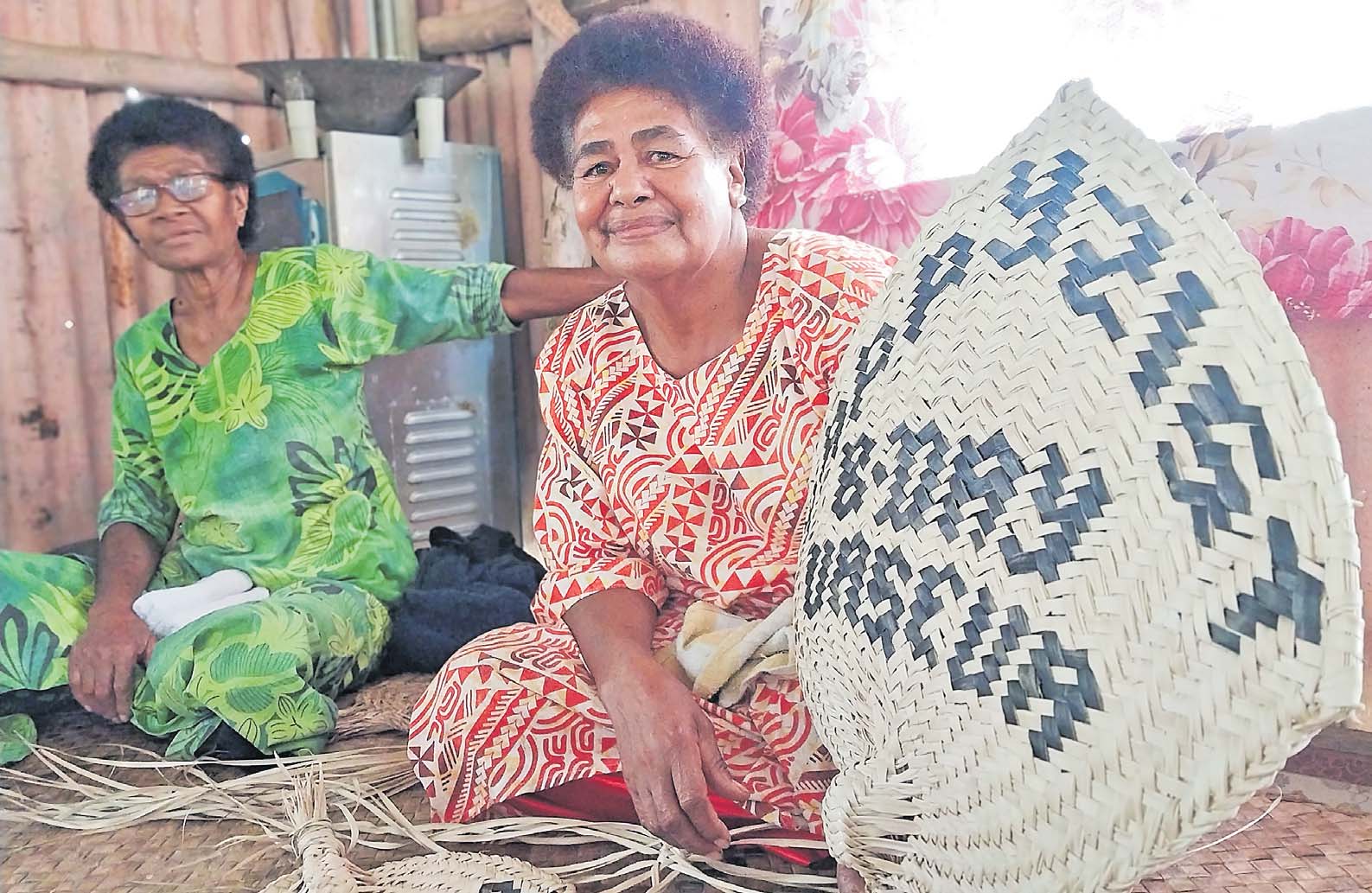Fijian fans are called iri. There are many types and sizes, and serve different purposes around Fiji’s diverse chiefdoms.
The common ones, found at any wood stove in villages, are made from coconut fronds.
These are rough in texture because they’re created for stoking fires.
Then there are the iri masei made from the niu sakiki plant (Arecaceae) whose broad leaves produce a fan that can be used as a shade (viu), for fanning and as a meke (traditional dance) accessory.
Given the numerous fans from the traditional chiefdoms, one that needs special mention for its uniqueness is the iri buli.
It is woven by a tiny clan called Nasaumatua in the village of Daku, on eastern mainland Viti Levu. According to folklore, the people of Daku originally came from the highlands of Lovoni on Ovalau, which is situated in the old capital of Levuka.
In their migration in search of a new place to settle, they were assisted by the Bau warlord, Naulivou Radomodomo Ramatenikutu, who was the warlord from 1803 to 1829.
Naulivou assisted the Nasaumatua people by acquiring land for them to settle.
They called their village Daku in memory of their ancestral clan’s name in Lovoni. They still live in Daku today.
As part of their eternal gratitude, the Daku elders vowed fealty to the Bau warlords and created the iri buli from young coconut fronds as a show of this gratitude. It is said that the art of weaving the iri buli cannot ever leave Daku Village.
Women who marry into the village and clan pick up the art, whereas women from Daku who marry outside the clan lose the skill. In the early ’80s, the then Bau warlord who was also Fiji’s first local governor general, Ratu Sir George Kadavulevu Cakobau, chanced to visit Daku Village and saw the villagers cutting mangroves to sell as firewood for a fundraiser.
The villagers had initially refused to sell the iri buli to earn money until the Bau warlord specifically gave them permission to do so.
The Fiji Times visited Kaleli in Tailevu and discovered that this small community, made up of less than 20 houses, are the custodians and guards of the coconut tree plantation used to make the famous fans.
Sesarina Murianagauna, 63, while showing the fan-making process, said Kaleli was a small community under the jurisdiction of Daku Village, located about 10 minutes walk away.
She said that they had been tasked with looking after the coconut plantation, the size of which could be equivalent to the distance from the Suva bus stand to the Government Buildings.
Ms Murinagauna said she learned the skill of making the iri buli from watching her grandmother and mother.
Today she can make an iri buli in less than 10 minutes. She said it had become the main source of income for the village.
All the women of Kaleli devote their time and effort in fulfilling orders that come from as far off as the United Kingdom.
Ms Murianagauna explained that the process of weaving a standard-sized fan, which can be sold for $15, involves cooking and drying the coconut fronds and weaving them together to make the famous fan.
While the detailed weaving method is a well-guarded secret not practised outside Daku Village’s boundaries, this newspaper was given the rare opportunity to witness a snippet of the intricate process.
The village elder said if the fan is made outside the village boundaries or if someone who isn’t from the village attempts to make the fan, “they get sick or something bad happens to them”.
Ms Murianagaun said that they had benefited from the sale of the famous iri buli which was why the Bau warlord gave them permission in the first place.
The rest, as they say, is history and the people of Kaleli and the people of Daku are proud that a product unique to them is widely recognised around the world today.



